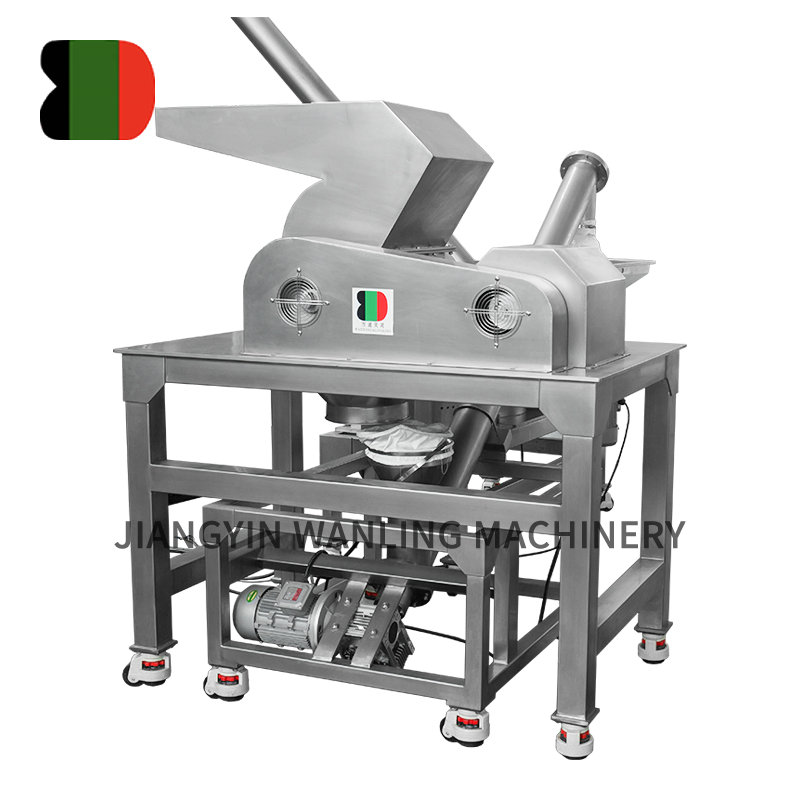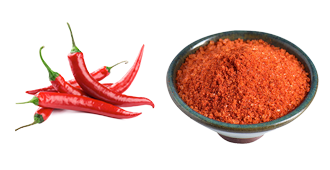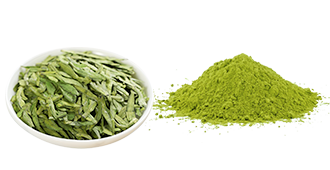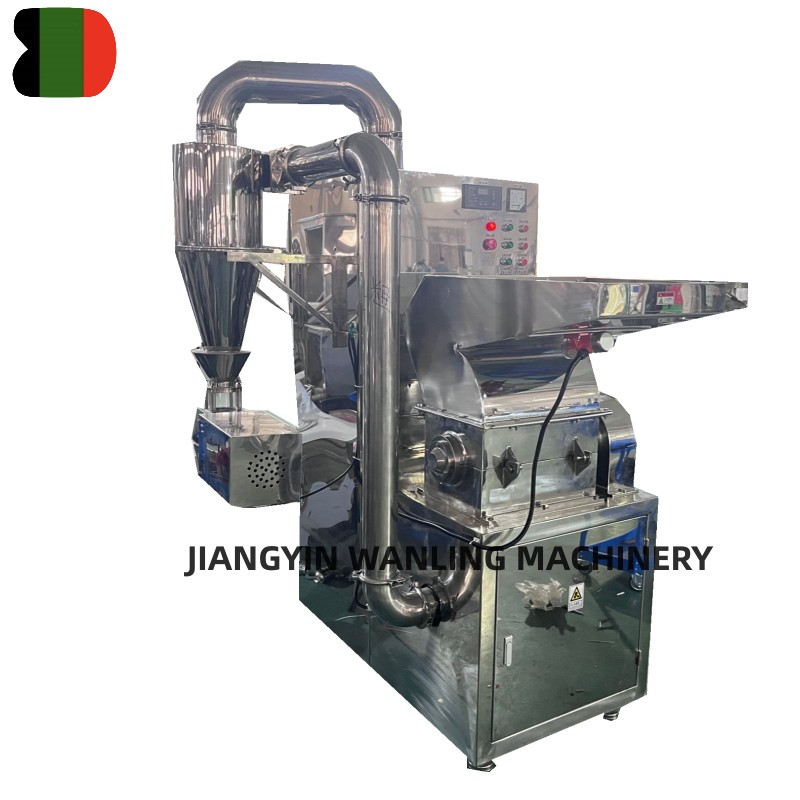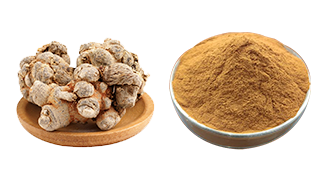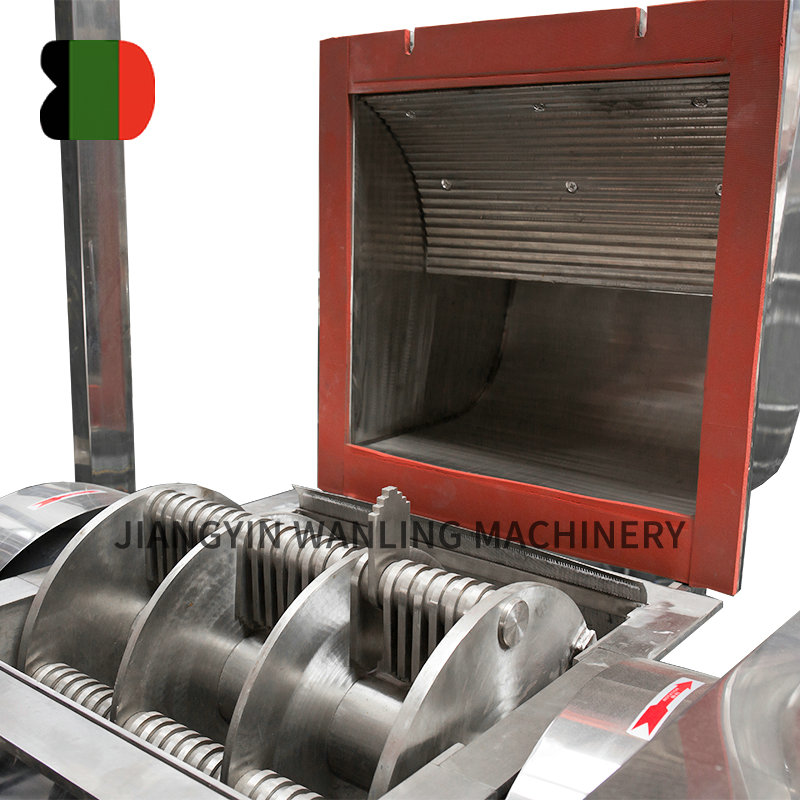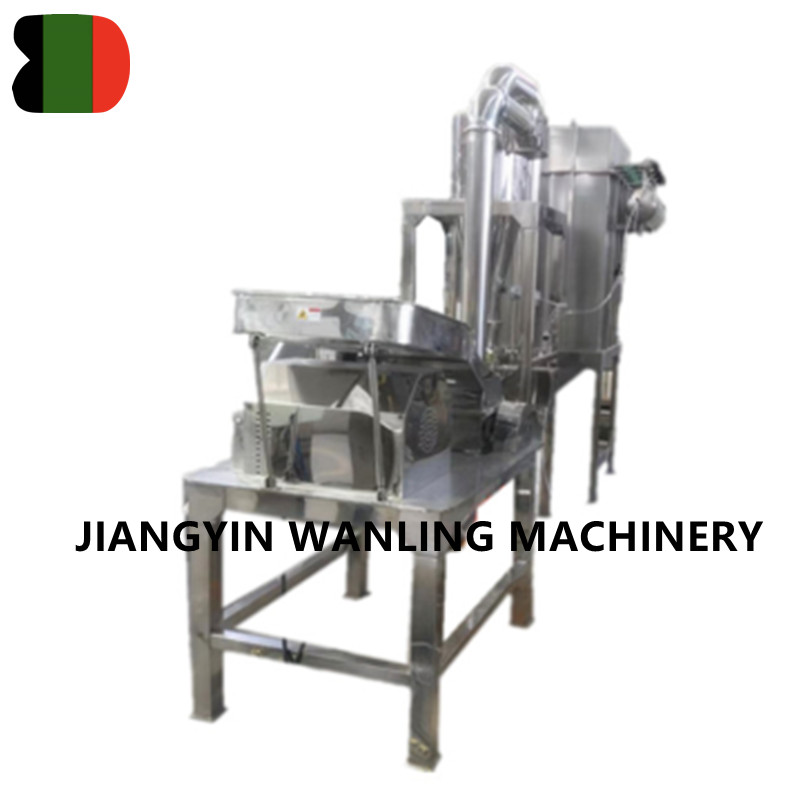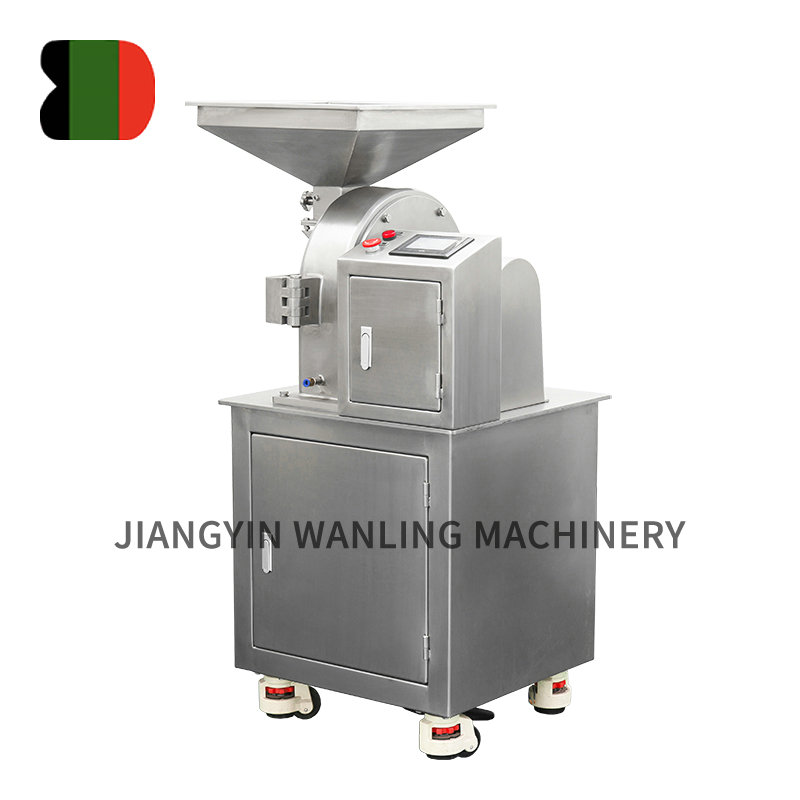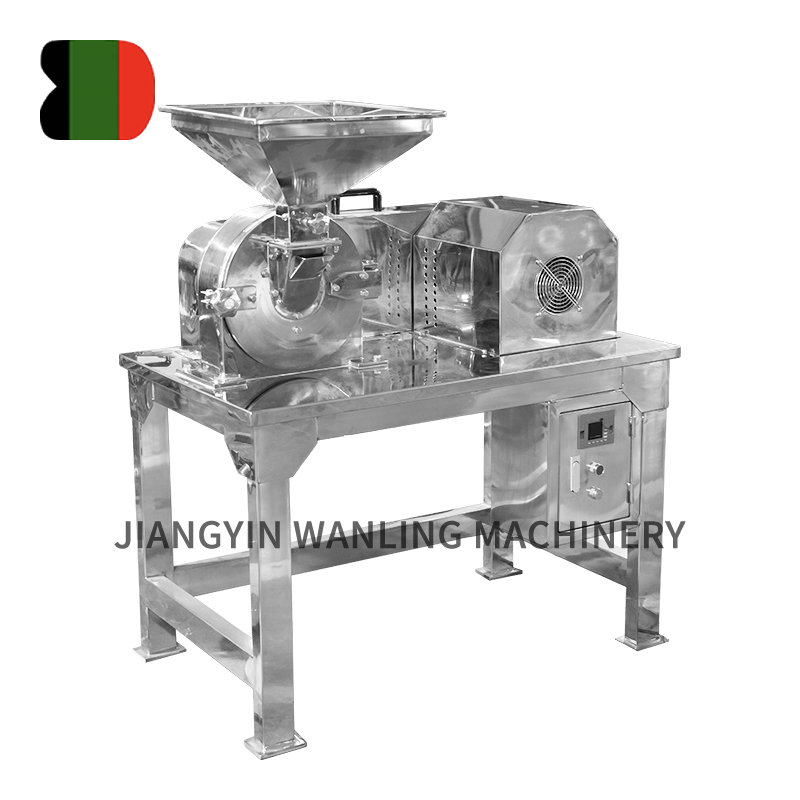An air classifier mill is a highly efficient grinding system that combines size reduction and air classification into a single unit. Its main function is to grind and classify materials into fine powders with precise and consistent particle size distribution. It is commonly used in industries such as pharmaceuticals, chemicals, food, minerals, and powder coatings.
How Does an Air Classifier Mill Work?
The air classifier mill operates based on the following integrated processes:
Grinding:
Material is fed into the grinding chamber, where a high-speed rotor (usually with hammers or pins) impacts the particles, breaking them down into smaller sizes.
Air Flow and Classification:
A high-velocity airflow carries the ground material toward the classification zone, where a dynamic air classifier wheel separates fine particles from coarse ones.
Separation:
Fine particles that meet the desired size pass through the classifier and are collected as final product.
Coarser particles are rejected by the classifier wheel and returned to the grinding zone for further size reduction.
This closed-loop grinding and classification system ensures consistent particle sizes without overgrinding.
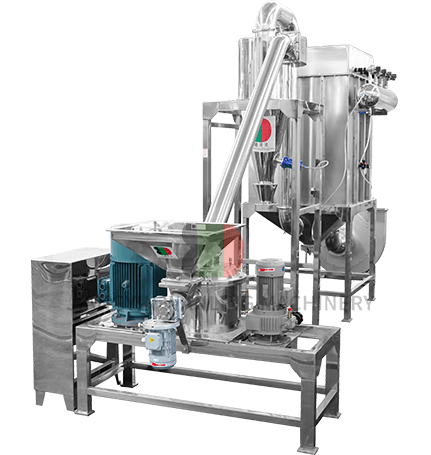
Main Functions of an Air Classifier Mill
| Function | Description |
| Fine Grinding | Reduces bulk materials into ultrafine or micron-sized powders. |
| Precise Particle Size Control | Built-in air classifier enables accurate separation based on particle size. |
| Efficient Classification | Eliminates the need for external sieving or screening steps. |
| Low Heat Generation | Air flow helps dissipate heat, ideal for heat-sensitive materials. |
| Continuous Operation | Capable of high throughput and automated production lines. |
| Versatile Application | Suitable for grinding dry, brittle, fibrous, and abrasive materials. |
Common Applications
| Industry | Typical Materials Processed |
| Pharmaceuticals | Active pharmaceutical ingredients (APIs), excipients |
| Food | Spices, starch, sugar, flour, milk powder |
| Chemicals | Pigments, polymers, resins, pesticides |
| Minerals | Talc, calcium carbonate, bentonite, silica |
| Powder Coatings | Thermoset and thermoplastic coating powders |
| Battery Materials | Cathode and anode powders, conductive agents |
Advantages of Using an Air Classifier Mill
Integrated grinding and classification in one system
Consistent particle size without the need for screens
Reduced energy consumption compared to traditional mills
Minimized dust and contamination with closed-loop design
Easy to scale up for industrial production
Lower maintenance with fewer moving parts than multi-stage systems
Conclusion
The air classifier mill is a powerful and versatile system for producing fine and uniform powders. By combining grinding and classification in a single unit, it simplifies the production process, improves product consistency, and reduces operational costs. Whether for food-grade powders, pharmaceutical actives, or industrial minerals, the air classifier mill delivers high-performance results across a broad range of materials.



 Español
Español